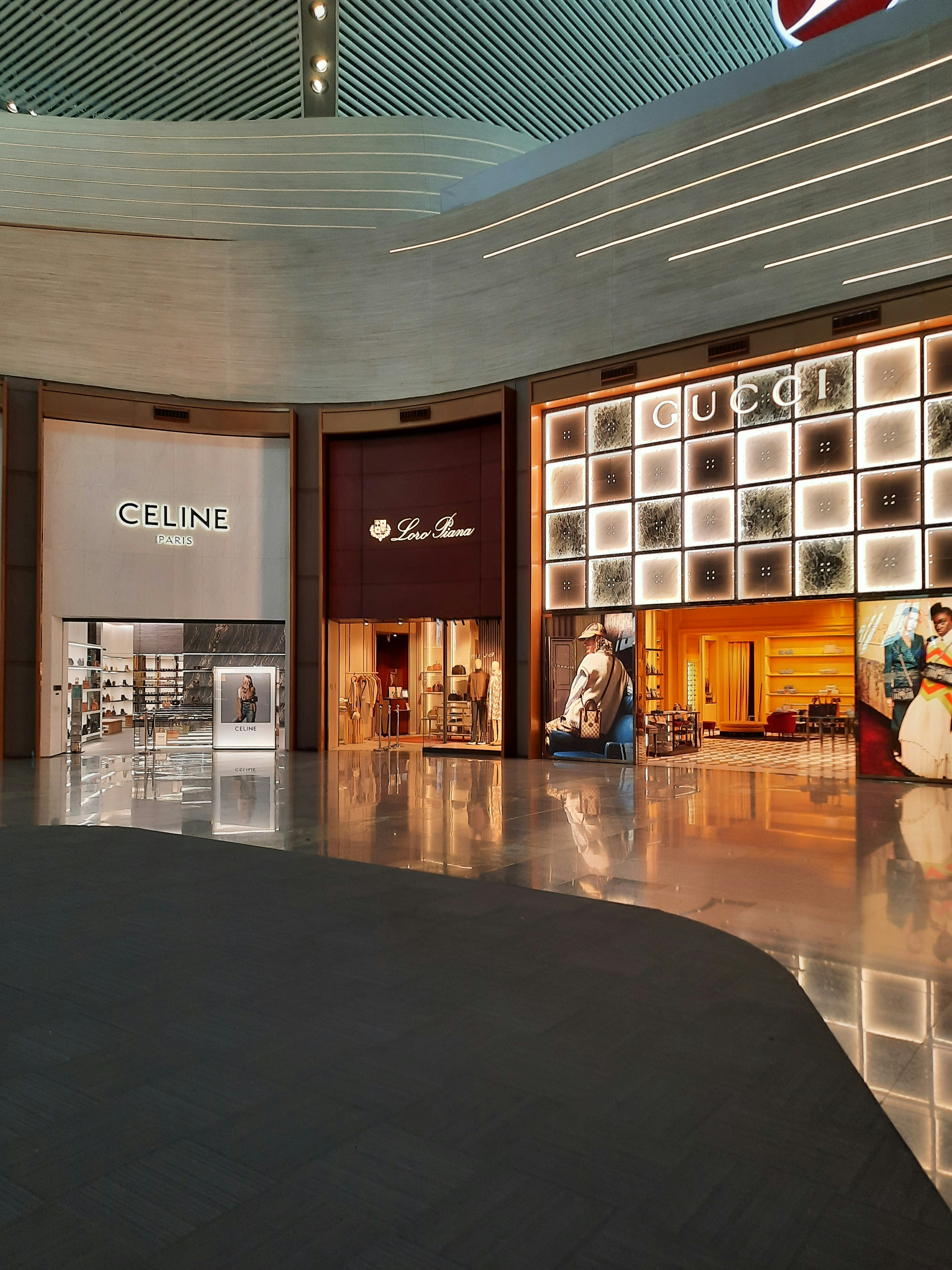
Understanding Luxury Fashion
Luxury fashion represents a segment of the fashion industry characterized by high-quality materials, exceptional craftsmanship, and limited availability. The origins of luxury fashion trace back centuries, evolving from the royal courts of Europe, where garments were primarily made for nobility and were distinguished by intricate designs and superior fabric. This historical context helps establish the foundational characteristics that define luxury today.
Key characteristics of luxury fashion include exclusivity, artistry, and meticulous attention to detail. Luxury brands often produce limited quantities of each item, ensuring uniqueness and desirability among consumers. This scarcity, combined with the use of high-end materials such as fine leather, silk, and cashmere, sets luxury pieces apart from mass-produced items. Additionally, luxury fashion often incorporates innovative design techniques and artisanal craftsmanship, which contribute to the longevity and rarity of these products.
Prominent luxury brands such as Chanel, Gucci, and Louis Vuitton have become synonymous with this category, often setting trends in the fashion industry. These brands not only invest in high-quality production but also engage in marketing strategies that enhance their image of opulence and prestige. The perception of luxury fashion is often tied to status, whereby ownership of luxury items serves as a reflection of wealth and taste.
Consumers’ purchasing decisions in the realm of luxury fashion are frequently influenced by these perceptions of value and status. For many, luxury items serve not merely as clothing but as symbols of personal achievement and social standing. As such, investing in luxury fashion is often seen as a mark of sophistication, leading buyers to prioritize these purchases over affordable alternatives. Therefore, understanding the nuances of luxury fashion allows consumers to appreciate the distinct qualities that define this elite segment of the industry.
The Appeal of Affordable Fashion
In recent years, affordable fashion has gained significant traction among consumers, becoming a prominent choice for those seeking style without the hefty price tag. The rise of affordable fashion brands can be attributed to their ability to deliver a wealth of options that cater to diverse tastes and preferences, making them particularly appealing to a broader audience. These brands often produce a wide variety of clothing and accessories that allow individuals to express their personal style without compromising their budget. This extensive range not only enhances the accessibility of fashion but also empowers consumers to be more adventurous in their style choices.
Moreover, affordable fashion brands have shown remarkable agility in adapting to fast fashion trends, quickly bringing popular styles to the market. Their responsiveness to evolving consumer demands allows them to stay relevant in an industry where preferences shift rapidly. As consumers increasingly seek fashion that reflects current trends, affordable brands have managed to provide timely collections that satisfy the desire for contemporary style, sometimes even mirroring high-end designs at a fraction of the cost.
One of the most significant shifts within the affordable fashion sector is the growing emphasis on sustainability and ethical considerations. As consumers become more conscious of the environmental and social implications of their purchases, many affordable brands have taken steps to implement sustainable practices. This includes using eco-friendly materials, adopting fair labor practices, and reducing waste throughout production processes. By aligning with these values, affordable fashion brands not only address consumer concerns but also promote a more responsible approach to style.
In summary, the appeal of affordable fashion lies in its accessibility, variety, and responsiveness to trends, all while increasingly incorporating sustainability into its business models. This movement offers consumers a chance to engage with fashion in a more inclusive and conscientious manner, making it an integral component of contemporary dressing culture.
Cost vs. Value: Analyzing the Splurge
When contemplating the world of fashion, the cost versus value analysis becomes crucial, particularly in the debate between luxury and affordable options. Luxury fashion items often come with a steep price tag, justified by qualities such as longevity, timeless appeal, and brand prestige. These factors can enhance the perceived value of a luxury item, often leading consumers to believe they are making a worthwhile investment. For instance, high-end garments typically utilize superior materials and craftsmanship, ensuring they stand the test of time, both in terms of durability and style. Additionally, luxury brands are often steeped in heritage, which instills a sense of exclusiveness and desirability.
However, it is important to weigh these advantages against the financial implications of splurging on luxury fashion. The high initial cost of luxury items can be a significant burden for many consumers, leading to the question of whether these purchases truly offer better value compared to their affordable counterparts. Affordable fashion provides a pragmatic solution for those who prioritize budget over brand prestige. With the rapid evolution of trends, there is an allure in frequently refreshing one’s wardrobe without the weight of significant financial investment associated with luxury brands. Furthermore, many affordable labels are adopting sustainable practices, creating high-quality, stylish clothing at a fraction of the cost of luxury alternatives.
The maintenance of luxury items also merits consideration. The ongoing costs associated with preserving the integrity of luxury pieces—such as professional cleaning and careful storage—can often diminish the potential savings and value purported by their longevity. Hence, aspiring to own luxury fashion isn’t solely about the splurge; it requires a commitment that extends beyond the initial purchase. Thus, an analysis of cost versus value should encourage individuals not only to consider the price of luxury items but also to evaluate how well they align with personal values and lifestyle needs.
Making the Right Choice for Your Wardrobe
Choosing between luxury and affordable fashion can be a daunting task, yet it is a decision that ultimately reflects individual preferences and lifestyle needs. Personal style plays a pivotal role in this choice; it is essential to assess what pieces resonate with your individuality. Luxury items often showcase craftsmanship and unique designs, which may resonate more with certain consumers. Conversely, affordable pieces can allow for a vast array of options and experimentation without the weight of significant financial investment.
When considering your budget, it’s important to establish a clear understanding of your financial capacity for fashion expenditures. Luxury clothing and accessories can often come with hefty price tags, dictating a more selective purchasing approach. However, this does not discredit the potential long-lasting quality of these items. On the other hand, affordable fashion offers accessibility and versatility, making it easier to refresh your wardrobe regularly. Determining where luxury can enhance your current collection while identifying cost-effective alternatives for everyday wear is key to a balanced wardrobe.
Lifestyle needs also contribute to the decision-making process. Professionals in corporate environments may find that luxury fashion assists in projecting a polished and sophisticated image, while casual lifestyles can embrace the adaptability of affordable clothing. Integrating both categories within your wardrobe is not only feasible but can be highly effective. Consider investing in classic luxury staples that provide longevity, while simultaneously filling in gaps with trendy, affordable pieces that can be updated seasonally. This hybrid approach allows individuals to express their fashion sense thoughtfully, maintaining both style and fiscal responsibility.


